The sea surface temperatures (SST) associated with El Nino events usually peak in Nov-Dec or around that time. Most ENSO events peak during Northern Hemisphere winters and decay through the spring. Exceptions are always there. Reasons still remain indeterminate. Even, the start and cessation of El Nino is yet to be reasoned out and lot remains to be learnt.
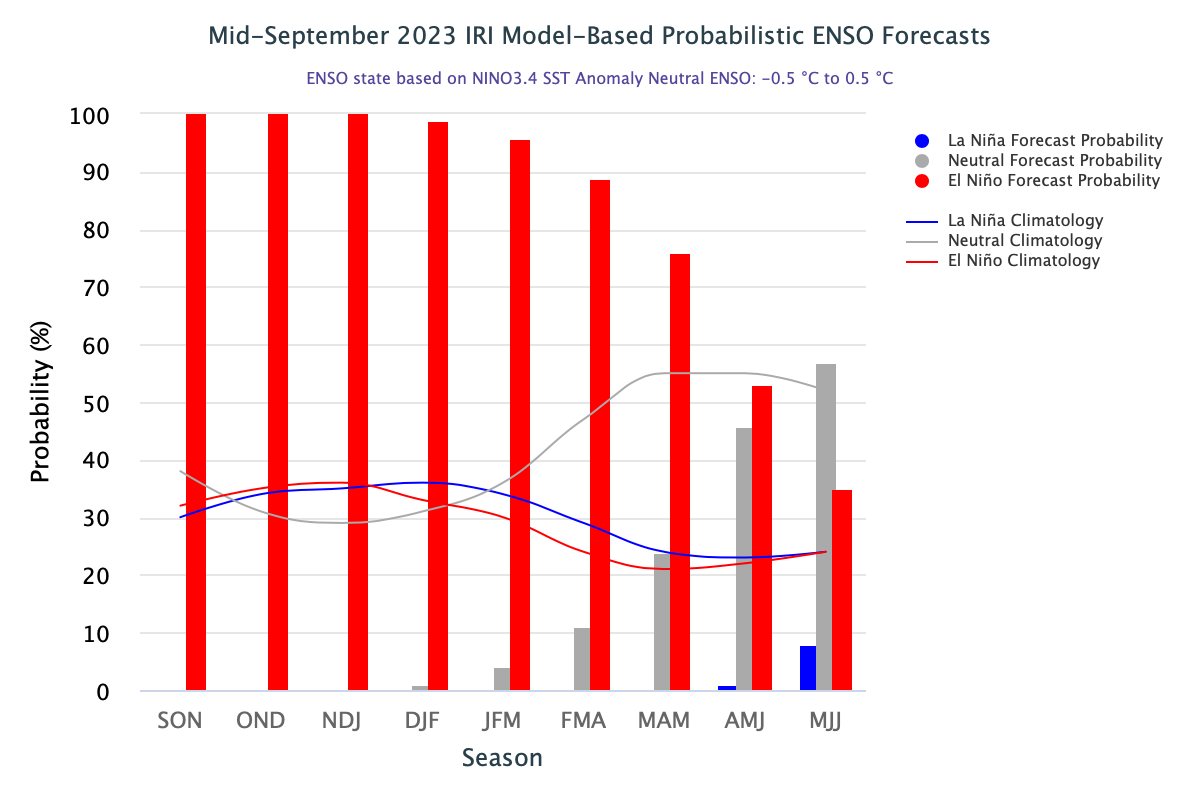
ENSO: As of September 2023, El Nino conditions in the central and eastern Pacific Ocean have strengthened further. Key oceanic and atmospheric variables are consistent with a moderate El Nino event . The Southern Oscillation Index (SOI) representing atmosphere has become increasingly negative. Courtesy triple dip La Nina, the SOI remained positive for nearly 3 years between 2020 & 2022. Signs of reversal started only in May 2023. The average value of SOI for September 2023 stands at -1.3, the highest since Feb 2016.

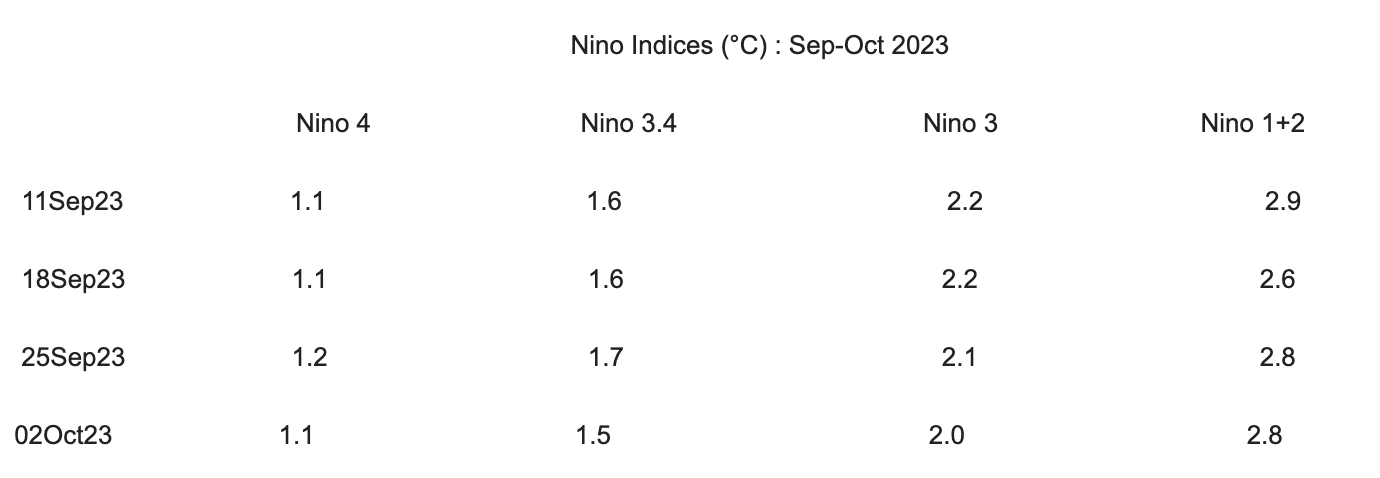
Nino indices remain above the threshold mark. The principal indicator Nino 3.4 remains nearly stable at >/= 1.5°C for the last 6 weeks. El Nino is anticipated to continue through the Northern Hemisphere winters with more than 95% chances through Jan-Mar 2024. At longer leads, the skill of the models degrades because of inherent limitations of initial conditions and differing model physics.
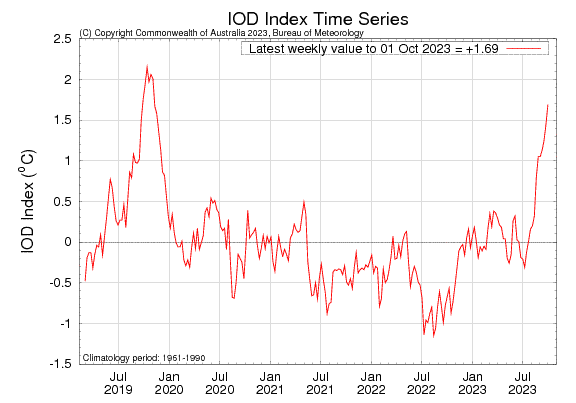
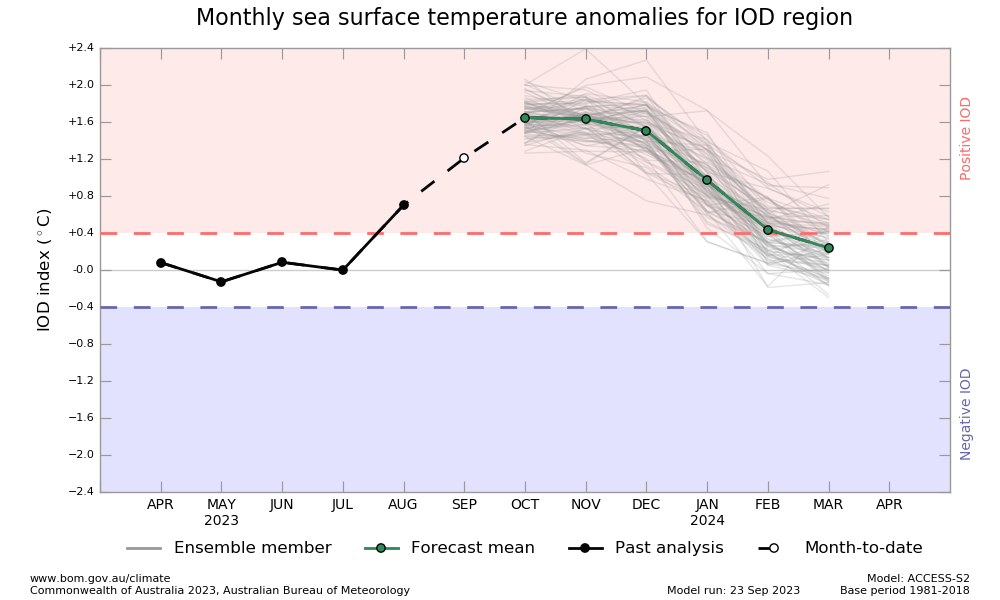
IOD: A positive Indian Ocean Dipole is underway. The IOD index has risen sharply and the weekly value ending 01 Oct 2023 was + 1.69°C. This is the 7th week above the positive threshold of +0.4°C. Consecutive 8 weeks positive IOD above the threshold value qualifies for an IOD event. Last year, the IOD was negative during the monsoon season. Mostly both, the -VE and +VE IOD events are followed by neutral IOD. Yes, 2023 is likely to be an aberration with positive IOD event, preceded by negative IOD. An IOD event usually start around May-June, peak between Sep-Oct and the rapidly decay during fall of the year.
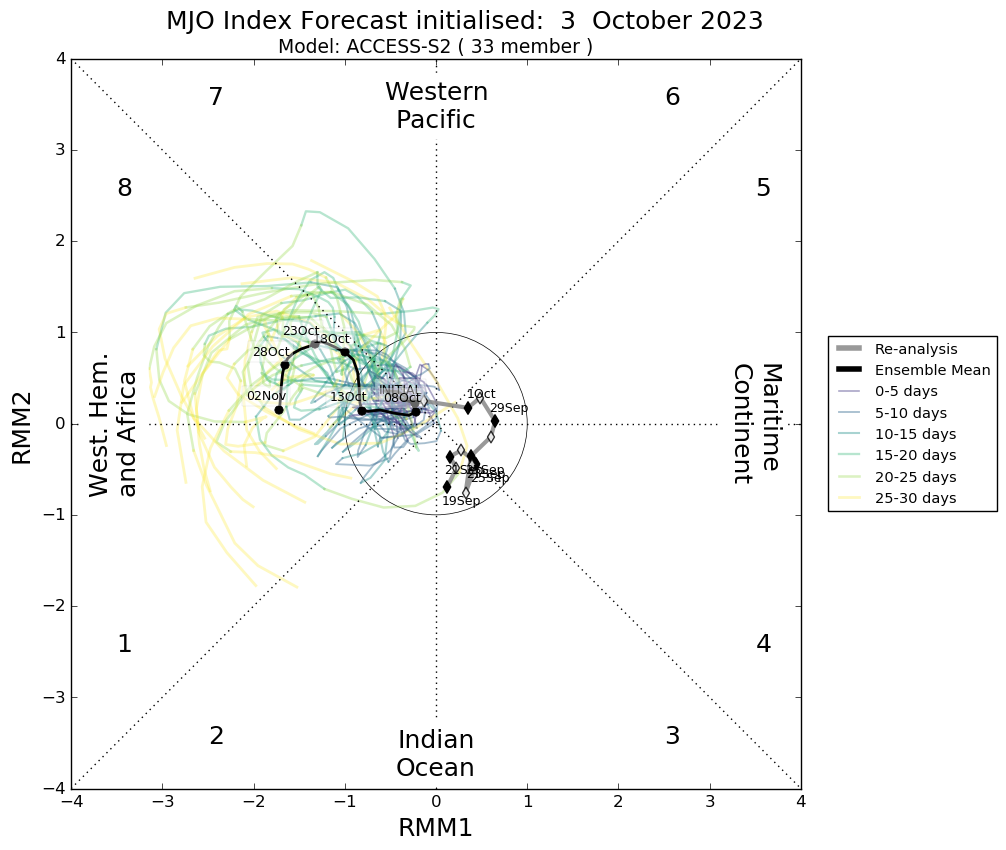
MJO: Madden-Julian Oscillation pulse is likely to be weak till 2nd week of October 2023. Thereafter, it is likely to propagate slowly to the Western Hemisphere in Phase 8&1. The Western Pacific and the Indian seas, typically have reduced tropical cyclone activity during such positions. The MJO is the major fluctuation in tropical weather on weekly to monthly time scales. It is typically represented by an eastward moving ‘pulse’ of cloud and rainfall near the equator, with a cycle of 30-60 days.
Ongoing El Nino event suppressed the southwest monsoon activity with large intra-seasonal variations during season 2023. While El Nino is known to corrupt the Indian Summer Monsoon Rainfall, no such adverse relationship is established for the Northeast Monsoon over South Peninsula. A moderate El Nino supports decent winter rainfall over North India, as well.


